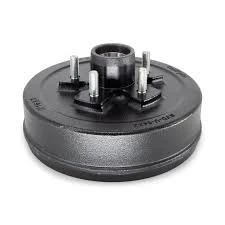
-
 Afrikaans
Afrikaans -
 Albanian
Albanian -
 Amharic
Amharic -
 Arabic
Arabic -
 Armenian
Armenian -
 Azerbaijani
Azerbaijani -
 Basque
Basque -
 Belarusian
Belarusian -
 Bengali
Bengali -
 Bosnian
Bosnian -
 Bulgarian
Bulgarian -
 Catalan
Catalan -
 Cebuano
Cebuano -
 Corsican
Corsican -
 Croatian
Croatian -
 Czech
Czech -
 Danish
Danish -
 Dutch
Dutch -
 انګلیسي
انګلیسي -
 Esperanto
Esperanto -
 Estonian
Estonian -
 Finnish
Finnish -
 French
French -
 Frisian
Frisian -
 Galician
Galician -
 Georgian
Georgian -
 German
German -
 Greek
Greek -
 Gujarati
Gujarati -
 Haitian Creole
Haitian Creole -
 hausa
hausa -
 hawaiian
hawaiian -
 Hebrew
Hebrew -
 Hindi
Hindi -
 Miao
Miao -
 Hungarian
Hungarian -
 Icelandic
Icelandic -
 igbo
igbo -
 Indonesian
Indonesian -
 irish
irish -
 Italian
Italian -
 Japanese
Japanese -
 Javanese
Javanese -
 Kannada
Kannada -
 kazakh
kazakh -
 Khmer
Khmer -
 Rwandese
Rwandese -
 Korean
Korean -
 Kurdish
Kurdish -
 Kyrgyz
Kyrgyz -
 Lao
Lao -
 Latin
Latin -
 Latvian
Latvian -
 Lithuanian
Lithuanian -
 Luxembourgish
Luxembourgish -
 Macedonian
Macedonian -
 Malgashi
Malgashi -
 Malay
Malay -
 Malayalam
Malayalam -
 Maltese
Maltese -
 Maori
Maori -
 Marathi
Marathi -
 Mongolian
Mongolian -
 Myanmar
Myanmar -
 Nepali
Nepali -
 Norwegian
Norwegian -
 Norwegian
Norwegian -
 Occitan
Occitan -
 Pashto
Pashto -
 Persian
Persian -
 Polish
Polish -
 Portuguese
Portuguese -
 Punjabi
Punjabi -
 Romanian
Romanian -
 Russian
Russian -
 Samoan
Samoan -
 Scottish Gaelic
Scottish Gaelic -
 Serbian
Serbian -
 Sesotho
Sesotho -
 Shona
Shona -
 Sindhi
Sindhi -
 Sinhala
Sinhala -
 Slovak
Slovak -
 Slovenian
Slovenian -
 Somali
Somali -
 Spanish
Spanish -
 Sundanese
Sundanese -
 Swahili
Swahili -
 Swedish
Swedish -
 Tagalog
Tagalog -
 Tajik
Tajik -
 Tamil
Tamil -
 Tatar
Tatar -
 Telugu
Telugu -
 Thai
Thai -
 Turkish
Turkish -
 Turkmen
Turkmen -
 Ukrainian
Ukrainian -
 Urdu
Urdu -
 Uighur
Uighur -
 Uzbek
Uzbek -
 Vietnamese
Vietnamese -
 Welsh
Welsh -
 Bantu
Bantu -
 Yiddish
Yiddish -
 Yoruba
Yoruba -
 Zulu
Zulu
Feb . 11, 2025 04:05
بیرته لیست ته
drum brake operation
Understanding the nuanced functionality of drum brakes is essential for those who seek a deeper comprehension of automotive mechanics or aim to make informed purchasing decisions regarding vehicle components. Drum brakes, although gradually overshadowed by disc brakes in contemporary vehicles, possess a unique mechanism that offers distinctive advantages in specific applications.
However, drum brakes are not without limitations. Heat dissipation remains a primary concern, as excessive heat buildup can lead to brake fade, reducing braking efficiency. It's imperative for manufacturers and engineers to carefully consider material composition and structural design to mitigate these disadvantages in high-stress applications. The expertise in maintaining drum brakes is not only grounded in understanding their mechanical intricacies but also in recognizing the signs of wear and tear—such as unusual noises or a spongy brake pedal—that may necessitate inspection or replacement of components. Proper maintenance ensures the reliability and extended lifespan of drum brakes, reinforcing their trusted role in vehicle safety systems. For those seeking to delve deeper into the world of drum brakes, it's crucial to collaborate with certified professionals who have a strong understanding of their assembly and operation. These experts are equipped with the necessary experience and skills to offer reliable advice, conduct thorough maintenance, and provide critical insights into the latest advancements and best practices in drum brake technology. Trust in automotive products extends far beyond the initial purchase, hinging on informed consumer choices and adherence to professional recommendations. By reinforcing knowledge, fostering expertise, and cultivating trust, drum brakes continue to secure their place within the diverse landscape of automotive braking solutions.


However, drum brakes are not without limitations. Heat dissipation remains a primary concern, as excessive heat buildup can lead to brake fade, reducing braking efficiency. It's imperative for manufacturers and engineers to carefully consider material composition and structural design to mitigate these disadvantages in high-stress applications. The expertise in maintaining drum brakes is not only grounded in understanding their mechanical intricacies but also in recognizing the signs of wear and tear—such as unusual noises or a spongy brake pedal—that may necessitate inspection or replacement of components. Proper maintenance ensures the reliability and extended lifespan of drum brakes, reinforcing their trusted role in vehicle safety systems. For those seeking to delve deeper into the world of drum brakes, it's crucial to collaborate with certified professionals who have a strong understanding of their assembly and operation. These experts are equipped with the necessary experience and skills to offer reliable advice, conduct thorough maintenance, and provide critical insights into the latest advancements and best practices in drum brake technology. Trust in automotive products extends far beyond the initial purchase, hinging on informed consumer choices and adherence to professional recommendations. By reinforcing knowledge, fostering expertise, and cultivating trust, drum brakes continue to secure their place within the diverse landscape of automotive braking solutions.
مخکینی:
تازه ترین خبرونه
-
What Are Drum BrakesخبرونهJul.07,2025
-
Understanding Brake Drum MaterialخبرونهJul.07,2025
-
Semi-Trailer Brake Drum: A Key Component for Extreme Loads and Long-Distance TransportخبرونهJul.07,2025
-
Drum Brake Pads for SaleخبرونهJul.07,2025
-
Brake Drums for SaleخبرونهJul.07,2025
-
Brake Drum ManufacturerخبرونهJul.07,2025
-
Aluminum Brake Drums: The Future of High-Performance CarsخبرونهJul.07,2025
